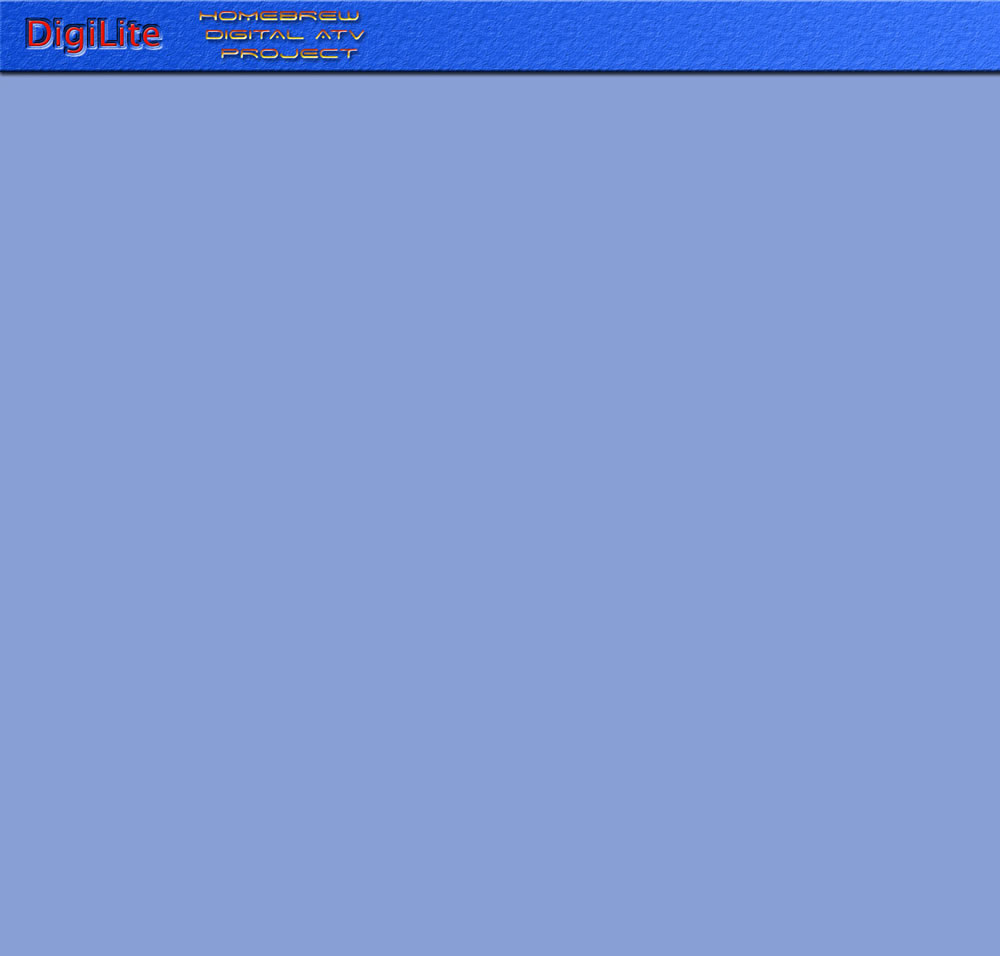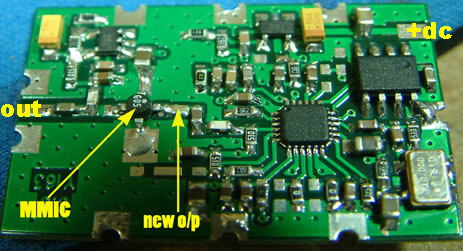LOCAL OSCILLATOR:
Low phase noise PLL Oscillator fixed at required output frequency, eg 1249Mhz.
Any old signal source will not do.
We have used the fixed frequency oscillator boards by Ultram Technologies(Ebay or see STORE), but there are of course many others. Only a few mV is required into the Mod chip, (between 5 and 10dBm) any more and you will need to attenuate it. To modify the Ultram Tech. board remove the MMIC and place a link (0 ohm SMD 1206) across the track. No extra coupling capacitor is needed. The Local Osc board must be in a well-screened box, if you do not wish to remove the MMIC then a 12dB attenuator should be fitted on the DigiLite input.
The supply of up to 8 volts should be connected to the tab shown in the top right-hand corner in this photo...
RF AMPLIFIER There is only a few mV of signal available at the output of the AD8346 modulator chip,so an ERA6 MMIC amplifier is used to give a small lift and act as a buffer. This is intended to give an output level around 5mW . Most PAs used for analog will work with digital provided the drive is kept low to ensure maximum linearity, careful adjustment of PA quiescent current (typ. 2A on RA18H) to give the best 'quality' reading on a commercial FTA satellite receiver will help. For testing purposes you will get enough signal from the modulator board to drive the aerial input of your satellite receiver whilst testing.(watch out for DC supply to LNB on socket).
L.O. Input Balun: BATC shop or http://www.bec.co.uk/ Type B5FL Part No:536049 ( Min order or 25s).
70CM VERSION Details on how to adapt the basic DigiLite to run on 2Ms/s on 70cms is available on HARDWARE/70CM page.
For those interested in the technical spec. for the Ultram Local Osc here is a typical report for the 23cms unit based on 1262 MHz:
output power : +11dBm
Phase Noise: -95dBcc @10KHz offset
Second Harmonic: -32dBc
Spurious: -61 dBc
Temp range : -10'C to +60'C
Supply Volts: +6v to +9v
Supply current: 91mA

